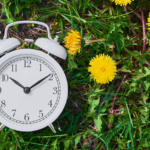
Cash flow is crucial in order to scale your business and one way to help remedy this issue is to switch your operations to a subscription service model.
Blades of Green, based in Edgewater, Maryland, has been operating this way for five years now. Brad Leahy, vice president of the company, says he would never go back from this. For anyone starting out, he advises going this route.
“We started the process because of cash flow problems,” Leahy says. “We’re a residential lawn care business, 99 percent residential. The average customer was spending $100 an application or something at the time and we were just always behind on money.”
Leahy says he got the idea of switching to a subscription billing model from the pest control industry. He also wanted to get away from sending out prepay letters in January and February.
“We sent out these prepay letters and I call them cancel letters,” Leahy says. “It’s just a reason for customers to say, ‘Oh wow, I’m spending this much money,’ they can see it all in one bill, and go ‘I don’t want this anymore.’”
Making the Switch
For Blades of Green, Leahy says switching over entirely to the subscription model was a lengthy process simply because they didn’t know how it would work at first. At the time, he couldn’t find anyone doing subscription services at the scale they wanted to do it at.
In year one, they tested it out on 100 accounts. In year two they started selling budget billing as an option. The company opted to call the model budget billing because it sounded friendlier. By year three Blades of Green automatically switched all the accounts they had credit cards for over to monthly billing.
“That was a big change,” Leahy says. “That was a big step. If I had to do it all over again, I would have done it all at once. We slow played it because we wanted to see what the issues would be on the technology side. There really weren’t too many, we figured those out. And then, then we went full force by just auto converting everybody.”
Leahy said they only had nine complaints out of 3,000 clients they switched over. Of the complaints, it was mainly because Blades of Green switched them over automatically. This is despite the company explaining why budget billing was beneficial for both the customers and Blades of Green.
“We wanted to be as transparent as possible,” Leahy says. “Hey look this is good for you and this is good for us. We explained it and we gave them a chance to opt-out, but some people didn’t read that email.”
Blades of Green also offers a 5 percent discount to entice customers to choose this model. Customers can choose to be billed on the first or the 15th of the month and this gets money on the books as fast as possible for Blades of Green.
Now 70+ percent of their customers are on budget billing, which simply takes their clients’ yearly costs and divides them by 12 for their monthly payments. The company uses Real Green Systems’ installment billing tab.
“We also solved another problem doing this, which was invoicing and statements,” Leahy says. “So now we don’t leave any paperwork. We’re a completely paperless company at the door.”
Leahy says 25 percent of customers are on automatic credit card deductions after service and the remaining five percent pay cash or prepay. If they do want to prepay, they have to pay for the whole year upfront.
“Some clients didn’t want paperless so with Real Green we found a very easy way to still supply the customer with an invoice,” Leahy says. “What we did by just using their system we run a report at the end of the day, we print out the handful of tickets and mail them out. So, it’s still more efficient than hanging doors with paper.”
Benefits of Budget Billing
Aside from the savings of going paperless, budget billing has also helped Blades of Green sell extra services and reduce cancellations.
“Our average sale has gone up more than what we raise our prices every year, so our average sale since we’re doing is somewhere around the 8 percent range,” Leahy says. “It keeps growing by five to eight percent over the last three years.”
Leahy says they’re outperforming their price increases as more people are adding on services. Aeration and seeding are the top services that have grown.
“It’s just easy to easier to explain, ‘Hey for $20 more a month, you can have this instead of saying for $240 a year you can have this,” Leahy says.
Leahy says their average customer has 2.17 programs so often times the company can do three services the same day on a property and the customers don’t have any problem with it since they’re just getting billed once a month.
For big-ticket items like aeration, they’re currently offering a hybrid where clients can choose to spread the cost out of over a certain number of payments. This is because if you roll certain services into a 12-month payment program, it will take you a year and a half to get your money recouped. Leahy says they’re trying to get rid of this payment method and let everything roll into 12 months because they have such a cash flow positive now.
“We have $700,000 a month coming in automatically,” Leahy says. “Now we’re in a position to loan customers money, if you will. We’re in a position to make it even more appealing by saying whatever it is divided by 12 months, that’s your price.”
Leahy cautions spreading out the cost of more expensive services over 12 months if you don’t have a lot of cash flow.
One way offering a subscription model differs from pest control is when it comes to cancellations. In the case of lawn care, there may be some services like aeration and seeding the customer has been paying for that haven’t been performed yet.
“We feel it’s only fair to refund or true-up their account,” Leahy says. “So, we true-up their account and if they owe us money, we charge their card or offer them a payment plan to continue the payments until you’re paid off.”
In some cases, when a person calls to cancel, Blades of Green will let them know they’ve already paid for the service and ask to finish out the program. Leahy says their cancel rate has gone down as result. The company is also retaining more revenue as it no longer has clients skipping one out of six scheduled services randomly.
“That’s just a mini cancel,” Leahy says. “We used to skip 3 percent of total revenue. It was on the books and for some reason, they didn’t want it. So now they don’t skip because they’ve already paid for it. Now we’re down to half a percent of skip revenue.”
Leahy says the main drawback currently is most clients don’t realize or forget they’ve agreed to this payment system so they can be surprised when they find out they have to pay the remaining bill when they call to cancel. He says it can get ugly and often the few negative reviews they receive are due to customers being upset about having to pay their remaining balance.
He says they are working on having better communication and better upfront agreements to make it clearer what budget billing entails.
“We have to let them know on a regular basis that they have budget billing,” Leahy says. “In addition to monthly billing, you’re going to get exclusive deals and offers and that only you’ll get and not the other customers, to make it more like a true subscription or a true club. You get special treatment because you’re helping us by doing the monthly billing and we’re helping you.”
Despite some of the negative reactions, Leahy says their bad debt is the same as it was five years ago but they’ve grown 120 percent.
“I would argue you get a lot of complaints about trying to collect your money when it’s past due, so instead of getting complaints about collections we’re getting complaints about our monthly billing,” Leahy says.
Who Does It Work For
This model’s success does depend on the demographics of your area. If you operate in an area that isn’t credit card or email friendly it might not be the right option for you.
“Number one you have to have their credit card and email information,” Leahy says. “You got to have a software that can handle this. If you don’t, I wouldn’t touch this.”
While Blades of Green doesn’t leave paper invoices, customers are still emailed about the basics of the service they’ve received. They can also access all the information about their account anytime they want through an online portal. Leahy advises checking with your state if you can go paperless as some require you to leave an invoice behind.
As for companies located up North where they’re not on the property a quarter of the year, Leahy is uncertain if this setup will work for them.
“I know if you’re in Maryland or south, it works,” Leahy says. “The warmer the climate, the easier it is I think to do. We’re off the properties for about 8 weeks a year.”
Leahy stresses it’s important to get your team on board with this change. At first, his own team did not want to make this shift, because it’s another way for a customer to say no. He says he was honest with his team about how they had to make the change to solve their cashflow.
Once the budget billing was rolled out, it hasn’t been an issue as their sales have gone up every year. Their closing rate is up, and the value of each sale has gone up too.
“You need to get some champions,” Leahy says. “You need an expert to do allocations, somebody who’s really good with the math part because you will be allocating money in both directions. Meaning they owe you money and you owe them money, so you got to have a strong accounting person.”
For those concerned about incurring the costs of credit card fees, Leahy asks what does it cost you to chase down your debt, what does it cost you in envelopes and paper, and what does it cost you for skipped or missed services?
“Credit card fees are like electricity,” Leahy says. “It’s just a matter of fixed costs, so to speak, where we know that’s part of doing business. Our P&L or profit projections are based on the fact that we know we’re going to pay those fees.”
Check out more about Blades of Green’s operations with On Tour.



